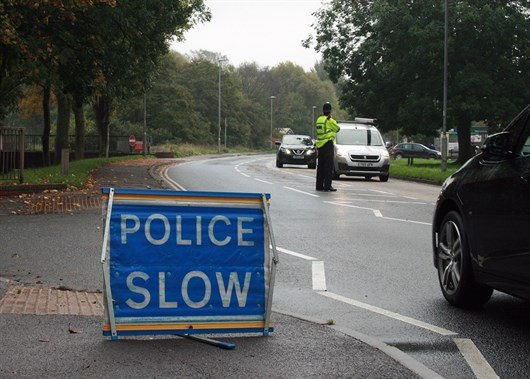Government urged to cut drink-drive limit after rise in the number of road accidents

The number of road accidents in the UK where at least one driver was over the legal alcohol limit has increased by four per cent.
Provisional figures from the Department for Transport (DfT) show 5900 road accidents in 2018 where at least one driver was over the alcohol limit. In 2017, the official figure was 5700.
This means drink-drivers killed or injured 8700 people in 2018 - an increase of one per cent on the 8600 recorded in 2017. The figures were sourced from accident report forms from local police forces and toxicology data for road fatalities.
The DfT will release its definitive 2018 drink-drive figures in August, but the data is expected to show that the number of people being killed by drink-drivers is similar to levels last seen in 2010.
The drink-drive limit in the UK was introduced in 1967 as part of the Road Safety Act, which set a maximum alcohol concentration of 80mg of alcohol per 100ml of blood.

In 2014, Scotland revised the drink-drive limit to 50mg of alcohol. Road safety campaigners now want a similar reduction for England, Wales and Northern Ireland.
"The scourge of drink-drivers remains a serious problem in Great Britain. For nearly a decade there has been virtually no progress in reducing the number of fatalities involving a driver over the limit," said RAC spokesperson Rod Dennis.
"A reduction in the drink-drive limit in England and Wales could be a better deterrent for some of these drivers, but there is also a clear need for more roads policing officers and stronger measures to tackle reoffending."
In 1979, almost 10 per cent of all road casualties occurred in accidents where least one driver was over the drink-drive limit. This fell to six per cent by 1990 and has mainly varied around five per cent since then.

 Dan Powell
Dan Powell
 Honest John Awards 2017: Land Rover Discovery Sport named Most Popular SUV for second year in a row
Honest John Awards 2017: Land Rover Discovery Sport named Most Popular SUV for second year in a row
 2022 Smart #1 SUV: price, specs and release date
2022 Smart #1 SUV: price, specs and release date
 2023 Ferrari Purosangue SUV: Prices, specs and release date
2023 Ferrari Purosangue SUV: Prices, specs and release date
 Citroen DS3 Racing revealed
Citroen DS3 Racing revealed
 Infiniti adds diesel to the range
Infiniti adds diesel to the range
 Volvo XC90 chosen as SUV of the year at 2014 Honest John Awards
Volvo XC90 chosen as SUV of the year at 2014 Honest John Awards
 March new car registrations better than expected
March new car registrations better than expected



![2021 Ford Fiesta 1.0 EcoBoost 125 Titanium X 5dr Auto [7 Speed]](http://images.honestjohn.co.uk/imagecache/url/crop/90x60/https/assets.heycar.co.uk/t_default-export/f_auto/application_assets/vehicles/pictures/8c1af86692d752a76f853367df7c5e0d/ec6a711fd26c8a81c7c7873ea3da71c0.jpg)

.jpg)






Falkirk Bairn on 12 February 2020
VERY VERY few Scottish drink drivers between the UK level and the lower Scottish level.An unscientific scan of my weekly local paper has most DD well over the UK limit - 3,4,5 and even 6 x the Scottish limit in last week's paper
One of the biggest effects of the new Scottish limits is the number of golf clubs, bowling clubs + country pubs shutting.
Instead of quick drink in the 19th hole - it's clubs in the boot and off home.
1 pint of average beer could be very close to the Scottish DD limit.if you have not eaten and / or are of low body weight.
hissingsid on 12 February 2020
Falkirk Bairn makes a valid point. Any reduction of the legal drink-drive limit will have no effect on the hardened habitual drinkers who cause the most serious accidents. They will continue their selfish and dangerous behaviour until they are caught.One unforeseen benefit of the drink-drive laws has been that most country pubs now serve food, and some serve restaurant quality food. When I started driving, a packet of crisps and a pickled egg was about all one could expect.
Engineer Andy on 12 February 2020
It would only make a difference if those referred to were in between the proposed lower limit and the existing one. I suspect they aren't - it's more that they don't expect to get caught.Sulphur Man on 13 February 2020
Make it zero. No one can work out how much one can drink without breaching the limit. Far too many variables. Furthermore, who goes to the pub for just one half pint or small glass of wine? There's zero tolerance for drivers using phones at the wheel, and rightly so.
Just make it zero.
Edited by Sulphur Man on 13/02/2020 at 12:20
MrPogle on 14 February 2020
If you make it zero and "no one can work out how much one can drink without breaching the limit", at what time can I legally drive the next morning?Husbandofstinky on 18 February 2020
Don't forget to refrain from using mouthwash too as technically you will be drink driving utilising this zero-tolerance approach.As with the vast majority of the general public, drink driving is frowned upon even below the prescribed limit let alone the unthinkable above it. However, according to a detailed NIHR report (please look it up), there is no formal data to suggest that there is a reduction in accident rates before and after lowering the limit. Compared to the rest of the UK, lowering the rate had no effect statistically and even relative to the rest of the UK, RTA's were actually 7% higher in Scotland.
Although in principle a reduction sounds like a partial silver bullet, in practice and as highlighted by the anecdotal evidence from post number one, the reality doesn't come anywhere near to its objective. In fact, quite the opposite for communities as pubs and clubs will continue to fail and close at an increased rate. In Scotland, onsite alcohol sales per person have reduced following the reduction, again suggesting a backing of post number one's observations and anecdotal evidence.
Definitely a tough subject to crack.
Triostar on 20 February 2020
Following on from Husbandofstinky's post, Scottish University study a while back, mining very detailed data, found that the lower limit in Scotland had no statistically significant impact on road accidents.Sulphur Man on 21 February 2020
@Mr PogleI can't answer that obviously.Your comment proves my point - you don't know either. Therefore make it zero.
@Husbandofstinky
1. There's loads of moutwashes sans alcohol, including children's ones.
2. Are you saying community clubs and pubs rely on a healthy disregard for drink-driving to facilitate their business? Just get a taxi there and back, or public transport if available.
David593 on 23 February 2020
So, they are already over the current limit.... How does reducing the limit help in a way education wouldn’t. I guess if you have a chauffeur you’ll be ok... Maybe some research before criminalising almost the entire country with a ‘zero’ limit though as that is barmy. ‘Six days after a half of bitter shandy, Dave was found with a molecule of alcohol in his blood and promptly shot by the new pc and vigilance police’. Noth9ng is perfect and sometimes people die....
Edited by David593 on 23/02/2020 at 10:15
Sulphur Man on 25 February 2020
Misinformation and hysterics again..
Everyone has an old wives tale, or some half-remembered tabloid story about people who can spill some wine on their shirt/blouse and record red in a breathalyser test. All rubbish. The test can be simply modified to remove trace alcohol and prosecute if the drink is genuinely detectable.
After all, one only gets pulled if the traffic police has reasonable suspicion to detect driving under the influence. Either the driver is drunk, or they're suitably admonished/prosecuted for careless driving. Win Win.
Edited by Sulphur Man on 25/02/2020 at 15:26
Add a comment